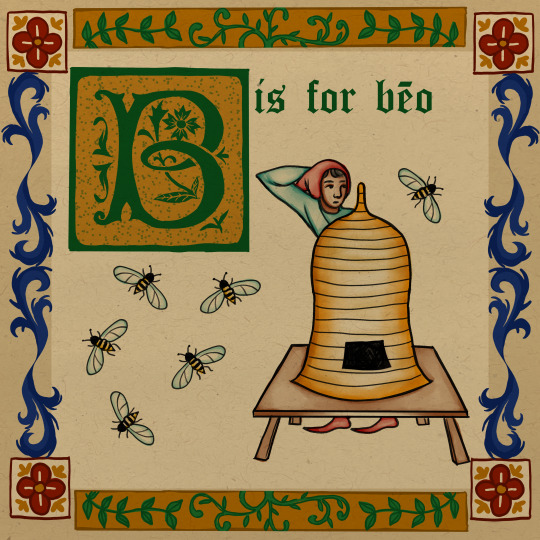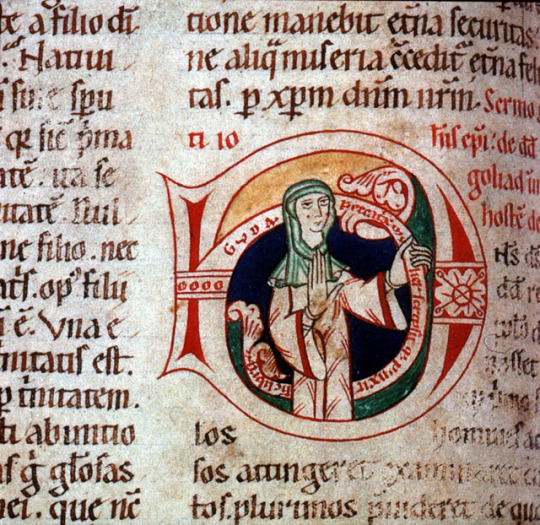#Medievalism
Explore tagged Tumblr posts
Text

Hellelil and Hildebrand (The Meeting on the Turret Stairs), Frederic William Burton, 1864
#art#art history#Frederic William Burton#historical painting#Middle Ages#medievalism#Irish art#19th century art#Victorian period#Victorian art#watercolor#gouache#watercolor on paper#National Gallery of Ireland
4K notes
·
View notes
Text




I had a moment of enthusiasm and it shows.
Henry V x Catherine of Valois sketches.
#the wars of the roses#hundred years war#henry v#catherine of valois#plantagenets#15th century#medieval#medieval england#british history#english history#art#oc#oc art#illustration#sketch#digital art#artists on tumblr#character design#the white queen#the white princess#henry vi#edward iv#elizabeth woodville#richard iii#house of lancaster#house of york#middle ages#medieval fashion#medievalism
166 notes
·
View notes
Text

Lady Godiva, John Collier, 1898, Herbert Art Gallery and Museum, Coventry, Great Britain
#Lady Godiva#painting#pre raphaelism#romanticism#medievalism#19th century art#art#art history#Europe#Great Britain#Herbert Art Gallery and Museum#Coventry
271 notes
·
View notes
Text





You like history, Alex?
#stumbling against the walls everytime i think about this scene and everything it sets up#anyways. really fascinating to me that he casts nigel AS The Pope here if we read into this as him also trying to cryptically communicate w#sally??? something about the construct of childhood and the devaluation of children#uhhh something. british education system. boys of alexs ability need regimented discipline.#something something… becoming the very thing you hste in your attempt to break free of it. the snake eating its tail#idk. thingd that make sense to me that i cant put into proper words yet#theres a thread there… i Know there is…#like minds (2006)#like minds#lm#alex forbes#sally rowe#murderous intent#cathars#medieval#medievalism
93 notes
·
View notes
Text

New Medieval Books: Authentically Medieval: Authors and Scholars on Depicting the Middle Ages in Fiction
83 notes
·
View notes
Text
I've seen some folks criticise the Decameron (the Netflix show) for not being "authentic" and "accurate" enough for
being too colourful
being too horny
being too silly and not serious enough when it comes to the subject of death and pandemic...
To which I would like to say they've clearly never looked into actual medieval history, culture and literature.
#lunellum rants#medievalism#the decameron netflix#the decameron#medieval nitpicks#also they somehow missed the massive tragic payoff in the actual show#let me know if anyone wants me to expand upon this because it pisses me off and I could go on about it for a while
203 notes
·
View notes
Text

B is for bēo (Old English for bee)
The epic hero Bēowulf's name translates literally to bee-wolf, which is likely a kenning meaning bear.
#my art#artists on tumblr#illustration#medievalism#medieval illustration#illuminated manuscript#historical art#old english#eald englisc#medieval artober#bees#honey bees#apiary#old english alphabet
1K notes
·
View notes
Text






On December 12, Curators Dot Porter and Nick Herman will be joined by Conservation Librarian Tessa Gadomski. We'll look at an as-yet uncataloged book of hours, written in the late 19th century. It was featured in an unboxing video in January, 2023:
youtube
Coffee With A Codex is an informal lunch or coffee time to meet virtually with Kislak curators and talk about one of the manuscripts from Penn's collections. Each week we'll feature a different manuscript and the expertise of one of our curators. Everyone is welcome to attend.
Register here:
#manuscript#19th century#medievalism#victorian#gothic?#book of hours#illustration#illumination#book history#rare books#art history#Youtube
101 notes
·
View notes
Text

#girlblogging#medieval#medievalism#history#historical#historian#Tudor#the tudors#tudorsedit#tudor style#terrible tudors#medieval England#England#United Kingdom#UK#british royal family#royalty#royal family#princess of Wales
57 notes
·
View notes
Text

The Crystal Ball by John William Waterhouse, 1902.
#classic art#painting#john william waterhouse#english artist#20th century#pre-raphaelite#medievalism#woman#red dress#skulls#books#chair#room#window view
426 notes
·
View notes
Text

Gawain and the Green Knight
#medievalism#medieval art#gawain and the green knight#king arthur#arthurian legend#arthurian literature#commissions open#artists on tumblr
73 notes
·
View notes
Text

Title: The Fairy Wood Artist: Henry Meynell Rheam (English, 1859-1920) Date: 1903 Genre: fantasy art; medievalism Medium: pencil and watercolor on paper Dimensions: 72.1 cm (28.3 in) high x 77.2 cm (30.3 in) wide Location: private collection
#art#art history#Henry Meynell Rheam#fantasy#fantasy art#medievalism#fairy#fairies#fair folk#British art#English art#20th century art#watercolor#watercolor on paper#private collection
714 notes
·
View notes
Text
Here's some of the @jstor articles I've found really interesting in this line of study:
From my gender/sex variance studies
Erecting Sex: Hermaphrodites and the Medieval Science of Surgery
Mary or Michael? Saint-Switching, Gender, and Sanctity in a Medieval Miracle of Childbirth
The Image of the Androgyne: Some Uses of a Symbol in Earliest Christianity
Transvestites in the Middle Ages
Two Cases Of Female Cross-Undressing In Medieval Art And Literature
Concerning Sex Changes: The Cultural Significance of a Renaissance Medical Polemic
Relating to disability
Sitting on the Sidelines: Disability in Malory
A Dwarf in King Arthur's Court: Perceiving Disability in Arthurian Romance
Disability and Dreams in the Medieval Icelandic Sagas
The Disabled and the Monstrous: Examples from Medieval Spain
Relating to sexuality
Sexual Fluidity “Before Sex"
The Disclosure of Sodomy in Cleanness
"Be more strange and bold": Kissing Lepers and Female Same-Sex Desire in "The Book of Margery Kempe
I will continue to update this list of sources as I find pertinent articles!
Your mileage may vary on these, not all of these have the most tactful or respectful dialogues but I found them interesting.
879 notes
·
View notes
Text

Morning Star earrings
111 notes
·
View notes
Text
Guda: a medieval self-portrait

Self-portrait of Guda, homilary, Frankfurt, second half of 12th century.
"The first category of figures we have considered shows the artist present in the work or in the process of creating it. To that category, we add a second type of portrait or self-portrait, in which the artist beseeches a favorable judgment for him-/herself after the work is completed.
Such is the case with the famous signed self-portrait of Guda, who represents herself within a collection of homilies in an initial D[ominus] for the octave of the Pentecost. The inscription reads: “guda peccatrix mulier scripsit q[ue] pinxit h[un]c librum (Guda, a sinful woman, wrote and painted this book).” Of the seven initials in the manuscript, this D is one of only two that contain figures. The other historiated initial comes at folio 196, the opening of the Assumptio Mariae, and contains a portrait of the virgin identified as Maria Virgo. The other five initials display dragons, interlaces, ribbons, or spirals.
Guda represented herself firmly grasping the initial with her left hand and raising her right in a gesture of salutation and expectation. I would argue that Guda carefully and consciously chose to be here. The initial opens the ninth homily of St. John chrysostom, the Sermo beati iohannes episcopi de david ubi goliad immanem hostem devicit (Sermon of the blessed Bishop John, on when David overcame the monstrous enemy Goliath), which explains the election of David. The homily also offers an occasion to meditate on the gifts of the Holy Spirit and its role in comforting the soul. In short, Guda has chosen the perfect spot in which to await the Second Coming of Christ, and this is why she represents herself as a sinner, whose activity as an artist should count in her favor at the end of time.
Guda’s self-representation in this way is analogous to the scene the scribe Swicher has staged (for the reader?) in the frontispiece of his copy of isidore of Seville’s Etymologies. Swicher’s author portrait is most original. In the upper register, Isidore of Seville is depicted in conversation with Bishop Braulio of Zaragoza, the patron of the Etymologies. In the lower register, Christ in propria persona presides at the scribe’s last judgment. Two angels busy themselves at a balance in which is weighed the very manuscript Swicher copied. The work of the scribe counts as a work of virtue: a third angel takes Swicher’s soul away through a thick cloud, whereas the devil turns around empty-handed. The Titulus attests to this: "O god, deign to have mercy on this wretched scribe. Do not consider the weight of my faults. Small though the good things may be, let them be exalted over the bad. Let night give way to light; let death itself give ground to life.”
Guda and Swicher make use of the same patterns of visibility and those patterns are not gender-specific. In both cases, the artists stage their humility and represent their belief that they might reach the heavenly kingdom through the artistic work they have done."
Mariaux Pierre Alain, "Women in the making: early medieval Signatures and artists’ portraits (9th–12th c.)", in: Reassessing the Roles of Women as 'makers' of Medieval Art and Architecture
#history#women in history#women's history#12th century#germany#german history#middle ages#medieval history#medieval women#women's history month#women painters#female artists#educational#herstory#illuminations#marginalias#manuscripts#medievalism#guda
221 notes
·
View notes